Artist, poet and activist Elaine Alibrandi uses her work as a means of visual storytelling. In Part One of our interview with Elaine, we talked about her route to becoming an artist, the techniques she uses and why her ’self portraits’ can sometimes be a little unsettling.
In Part Two Elaine tells us about process, inspiration and offers advice to aspiring artists.
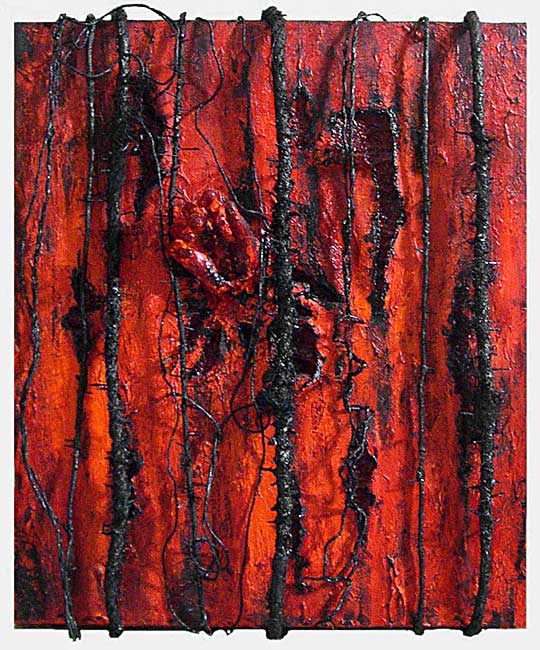
My studio feeds my soul
TextileArtist.org: Tell us a bit about your process and what environment you like to work in?
Elaine Alibrandi: If I am moved by something, especially in nature, I automatically envision in my mind the art piece it will become, complete with the media I’ll use to create it. I like to work alone in my studio, often in silence but mostly with music playing. I feel about music the way I do about art: If it grabs my soul, it’s mine forever. It’s the hand in which my heart beats.
I love working in my studio, which is in my home, although the former is taking over the latter, which is fine with me. Having my art in various stages all around the place inspires me. The great thing about my studio is that I can see my friends and neighbors, who often look up at my window to see if I’m working when they pass by. Their smiles and waves remind me that, although I’m alone in my own sacred place, I have good people around me.
Being in my studio feeds my soul. In addition to creating art, I greet the morning there; it’s where I go to think and feel calm. I often sleep there if I’m working on a piece late into the night.
Do you use a sketchbook?
I always have a firm idea of what a piece will look like well before I start, so I rarely use a sketchbook unless I’m designing the composition of a work within a particular size or shape. Instead, I use a leather-bound book given to me by some very dear friends and which I’ve designated an “art diary” for jotting down ideas for pieces, their progress at certain intervals, how I solved problems with the media (for future reference), and finally, my feelings about the pieces when they’re finished. I also fasten a small image of each piece to the diary page(s) I used.
What currently inspires you and which other artists do you admire and why?
Nature is a huge inspiration to me. Women’s issues drive much of my work as well. Art that grabs my soul inspires me, as does conceptual art that is also visually interesting to me, and art that sparks an idea in my mind or some spirit of kinship with the artist. The genre doesn’t matter as long as I feel a pull to look at a piece and think about it.
As for artists I admire, Cornelia Parker is a great one. Her Hanging Fire (Suspected Arson), which I first saw at the Institute of Contemporary Art in Boston, totally blew me away, as does her Subconscious of a Monument. I admire Dawn Ng and Giuseppe Licari for their brilliant installations that dynamically employ objects, shadow, and perspective.
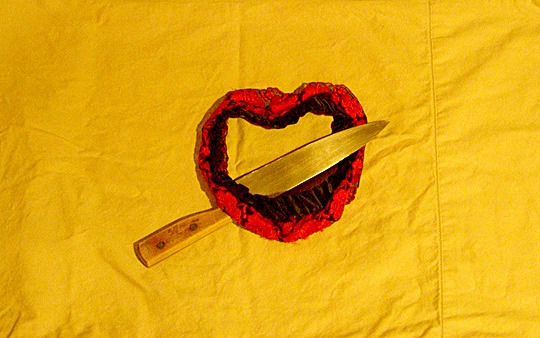
Superficial trappings
Tell us about a piece of work you have fond memories of and why?
That would be the very first clothing piece I ever did: Cast Off. I had turned 50 years old and was rethinking just about everything that was or had been important to me at certain times in my life. Looking in my closet, I examined all the dresses and accessories I didn’t wear anymore and remembered how my appearance had, at one period, taken up a lot of my time and defined my feelings about myself. It had been great fun to wear those things, but they now seemed utterly irrelevant to my life as an artist.
On an impulse, I grabbed a white, beaded dress, took it into my studio, and began cutting the material with scissors. At first, I cringed a bit at ruining a piece of clothing on purpose, but I quickly became excited. The idea lunged at me: Put the shreds on stretcher bars to depict my true nature overpowering the superficial trappings of fashion that, for me, had dictated my self-esteem. It was like the Incredible Hulk splitting open his shirt! (The thought occurs to me that I should do something creative with all that unused makeup as well.)
Anyway, I removed all the beads that had been sewn on in a deliberate pattern and put them back on the dress in a scattered way that suggested they were falling down the dress.
But it needed something. Well, what’s a dress without the shoes and bag to match? So I added those and it was done: In that piece, I saw myself and my priorities emerging and dominating. Another self-portrait. It’s also become a very popular piece with viewers.
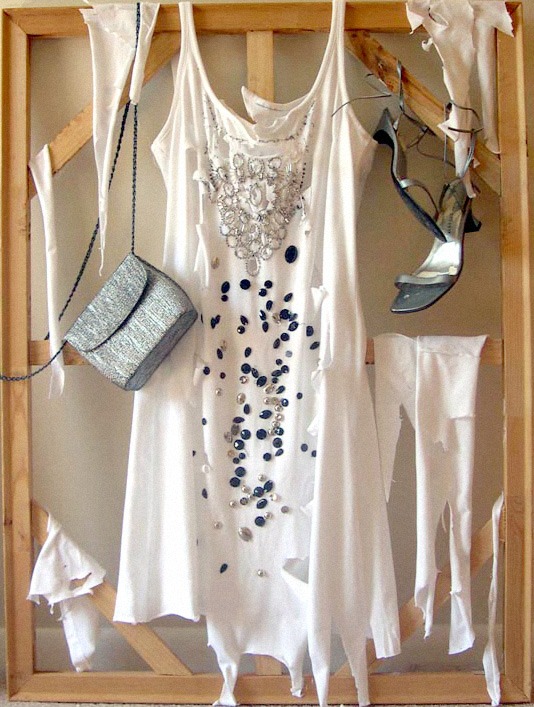
Another piece in which a dress, shoes, and bag are the main characters is I Have the Fee in Here Somewhere, which I was fortunate enough to have juried into shows in South Korea and in California. Because U.S. legislators are passing bills limiting abortion access and trying to make abortion illegal even in cases of rape and incest, I decided to create a piece with clothing that had been violently torn as if from a rape. As the title suggests, victims and other women will simply have abortions performed illegally in filthy conditions by dubious “abortionists.”
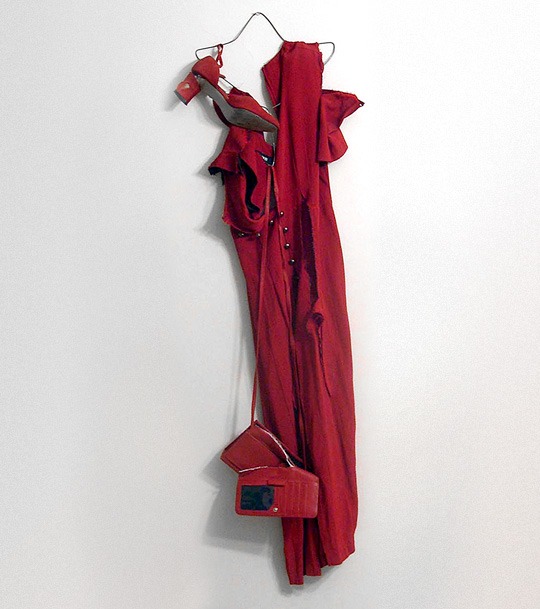
Artistic growth
How has your work developed since you began and how do you see it evolving in the future?
My work has become much more daring and diverse than when I began. I had subconscious limits as to what to use in my art and how to use it, and fears about whether a piece would turn out successfully. Now I’m completely unbound by those limitations and fears.
In the future, I want to do larger, more complex pieces and would love to create large-scale installations, particularly with cloth or clothing. I’m also planning a performance piece with another artist; I’d like to do more of that.
What advice would you give to an aspiring textile artist?
Don’t be afraid to explore all avenues that interest you, even if they lead you far away from your comfort media. There is so much to experience, and I’ve discovered that I frequently return to a previous style with a fresh perspective once I’ve tried other things in my work and in my life. It can only lead to artistic growth. Avoid labels such as “painter,” “sculptor,” and even “textile artist.” We create intentionally. We are artists.
Resources
What other resources do you use? Blogs, websites, magazines etc.
LinkedIn is a great way to connect with artists, writers, curators, and other creative people. I’ve discovered insightful and outstanding work by the artists with whom I connect. It’s interesting for me to find poetry writers, too, since I write poetry myself.
For artist calls, I use artnexus.com, entrythingy.com for artists, and sometimes theartguide.com.
What piece of equipment or tool could you not live without?
My one eye that still has some vision in it.
How do you go about choosing where to show your work?
I love to show my work in venues where experimental art is truly appreciated and not merely given lip service. Many gallery owners say they want novel ideas and cutting-edge work, but they really don’t.
I’m lucky enough to be represented by Paola Trevisan, who is based in Italy; she always provides wonderful international opportunities to her artists.
Where can readers see your work this year?
I have a piece in a show at the Sebastopol Center for the Arts in Sonoma County, California, February 20-April 4. I’ll also be showing several pieces at the Galleria de Marchi in Bologna, Italy, in April, and at the Ateneo de Madrid, Spain, in October. Other shows are in the works; readers can find out about them at my website: elainealibrandi.net
March 5-March 29, 2014: “Fractured Yet Rising”
ARC Gallery, Chicago, Illinois
April 12-April 24, 2014: “Little Treasures 2014”
Galleria de’ Marchi, Bologna, Italy
June 1-July 31, 2014: “Hot and Cold” (this will include my poetry as well as two artworks)
310 Art Gallery, Asheville, North Carolina
October 1-October 15, 2014: “Synchronies/Sincronías Prado Rooms”
Ateneo de Madrid, Spain
For more information please visit:
www.elainealibrandi.net
Elaine’s Behance page
Elaine’s Year in Review 2013
If you’ve enjoyed this interview with Elaine Alibrandi check out part one of our interview here and leave a comment below.

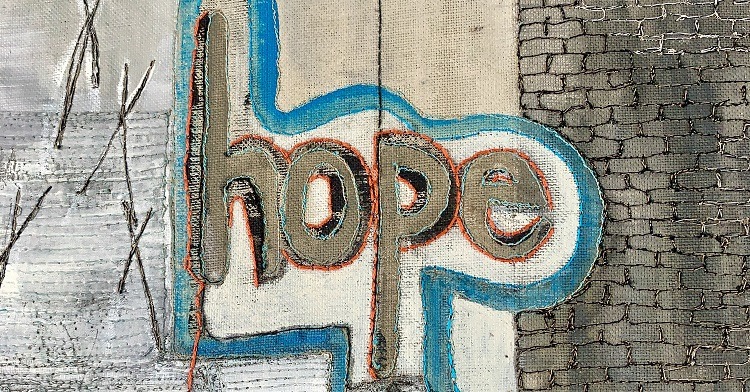
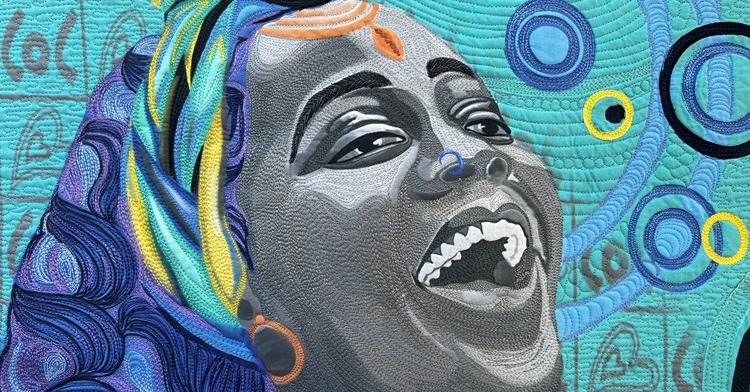
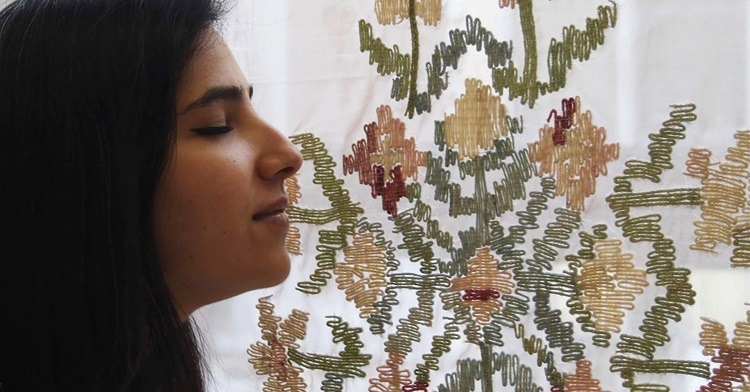
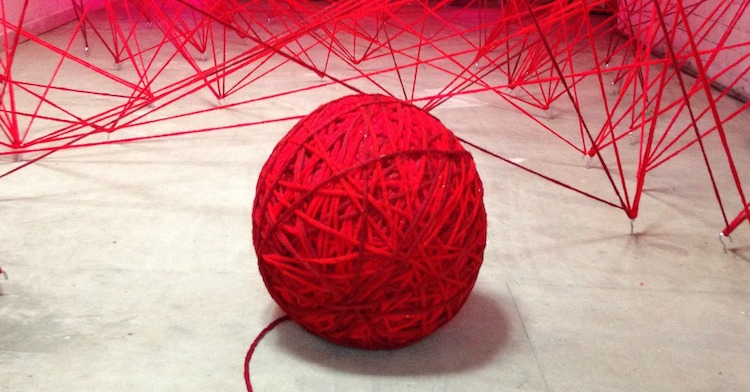

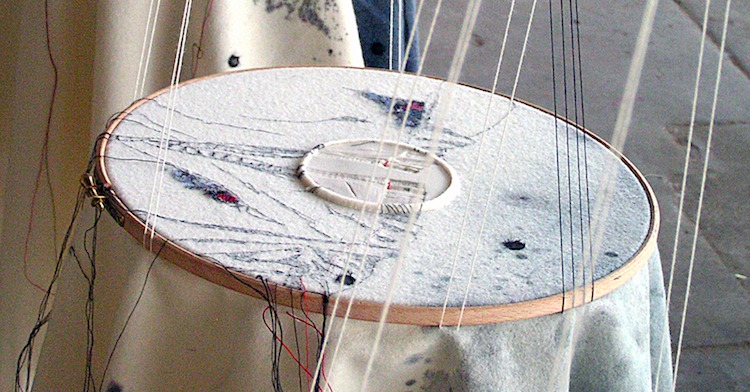
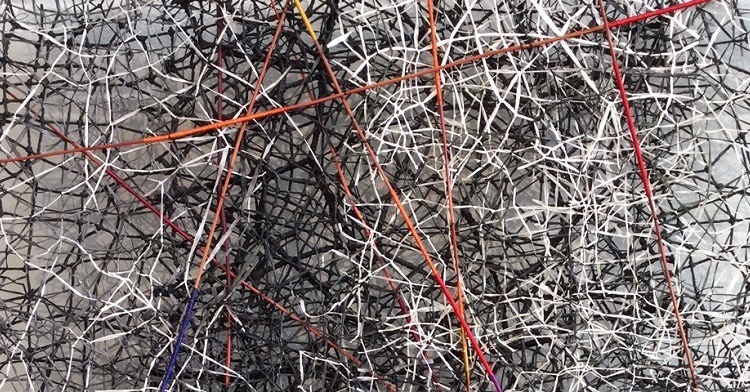
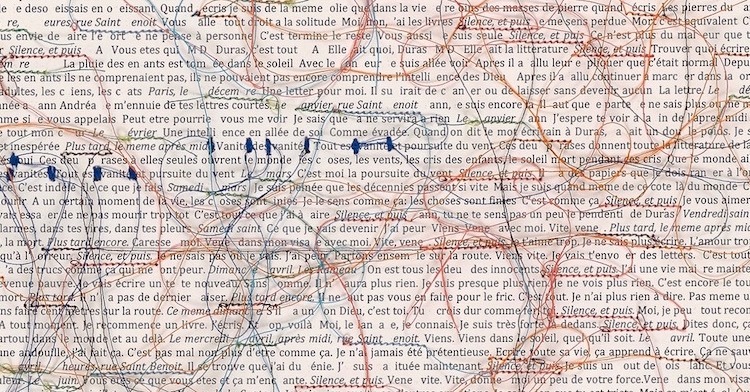
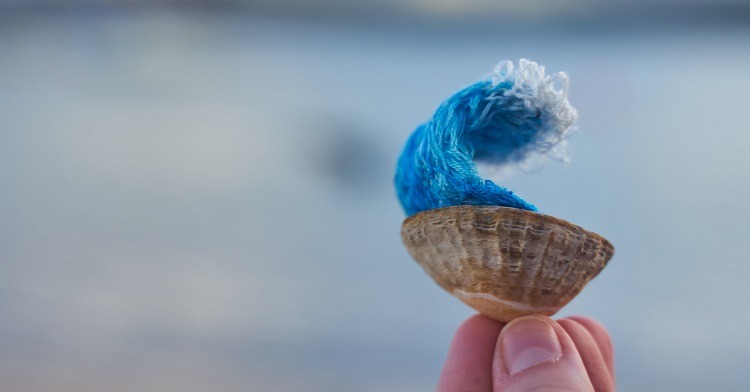
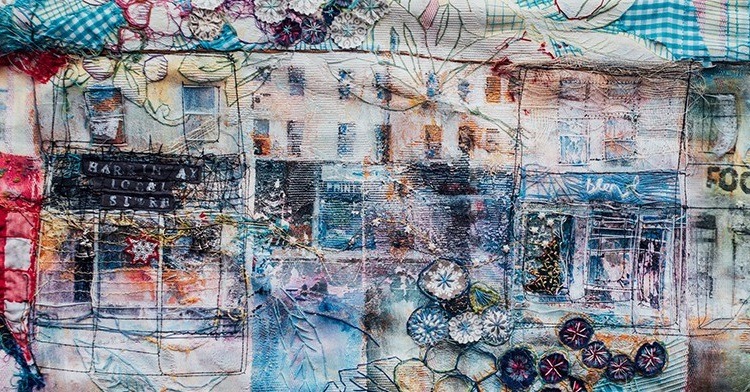
Comments